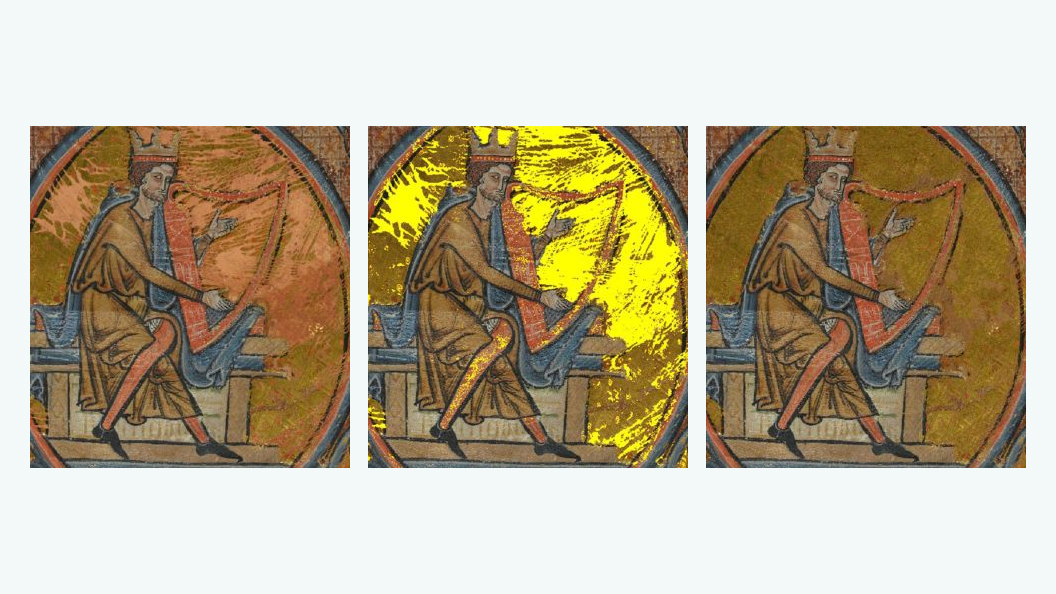Mathematicians and Conservators Work Together to Restore Artwork
Restoration of a damaged artwork or artifact poses a delicate issue: while restoration can perhaps return an artifact to what it might have looked like when it was newly completed, the fact that the artifact is damaged in the first place is also part of its history.
Illuminated manuscripts from the middle ages might have some of the gold-work removed deliberately to erase trace of the original owner or because an image that was once revered was then, years later, found to be offensive. Many statues and reliefs across the walls of the ancient world have been defaced in a similar manner by different armies and agents throughout the course of history.
“What do we gain by restoring, and what do we lose by restoring?” asks Suzanne Reynolds, curator at the Fitzwilliam Museum in the Department of Manuscripts and Printed Books. She is a founder of the Mathematics for Applications in Cultural Heritage (MACH) initiative, a cross-disciplinary collaboration that combines the skills of art historians, conservators, classicists, and medievalists with that of mathematicians to further develop restoration and archaeology.
Let there be light: re-illuminating manuscripts
Carola-Bibiane Schönlieb, professor of applied mathematics at the University of Cambridge, is her co-founder. In their current project, “Unveiling the Invisible,” the team uses MATLAB® algorithms to analyze paint cross-sections, allowing scholars to see exciting new relationships between artifacts for the first time. Using algorithms in this way also gives scholars the opportunity to digitally restore illuminated manuscripts that are simply too fragile for physical restoration.
“Using virtual and mathematical methods allows you to keep the [illuminated manuscript] as it is and retain that history, and offers a restored, pristine version of what it might have looked like. It gives you the opportunity to have the best of both worlds.” – Suzanne Reynolds, curator at the Fitzwilliam Museum.
The opportunities afforded by this high-tech working environment expand to many different fields, from cataloging pottery at dig sites, to analysis and cross-comparing paint chips from frescos, to expanding the digital offering of museums and universities.
“There’s a hope that it will be very useful for teaching because it will enable you to work with images of objects at their best,” says Reynolds. The tool could also expand museums’ virtual offerings, showing the members of the public both the actual artifact and the digital “original.”
Source: AI Unveils the Secrets of Ancient Artifacts
Top image: Digitally restored manuscript. From left to right: detail; Inpainting domain; final result. Credit: The Fitzwilliam Museum, Cambridge
Please Support us on Patreon!
 The minimum level of contribution is only $1 per month.
The minimum level of contribution is only $1 per month.
Moreover, starting with the pledge level of $3, you will get a digitized vintage book about bookbinding, book history, or book arts each month from us!
These pledges help iBookBinding to continue its work and bring more information about bookbinding and book arts to you!


